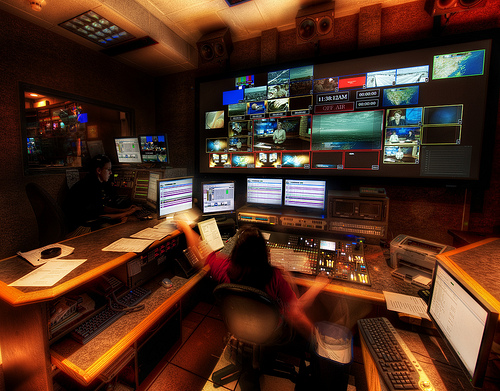ATSC Audio Seminar: Engineers Reach Sound Conclusions
RANCHO MIRAGE, CALIF: “Your ears are your best loudness meter.” That was Ken Hunold of Dolby at the ATSC Audio Seminar, part of this week’s Hollywood Post Alliance Technology Retreat near Palm Springs. Hunold and a cast of other aural experts spent Tuesday morning discussing the sound of digital broadcasting.
The old saw about broadcast audio has to do with flame-haired step-children, and the current frenzy over 3DTV lends a certain legitimacy to the bromide. The law, however, is not leaning on TV to be in 3D, but it’s getting close to doing so over audio issues.
Congress last session passed a bill to regulate TV audio loudness; companion legislation in the Senate remains pending. Lawmakers got testy over abrupt changes in volume often associated with commercial breaks. Audio engineers have been hammering at the problem for quite some time. The ATSC--Advanced TV Systems Committee--issued a Recommended Practice on broadcast audio and loudness levels last year after years of study.
Tests conducted on people’s tolerance for audio volume variation yields a perceptual diversion of around 2 dB, Hunold said. After that, they’ll likely futz with the volume level, so the idea is to rein it into a perceived comfort level within the broadcast plant.
The first order of business was defining an algorithm for broadcast audio loudness, which was achieved by the International Telecommunications Union Radiocommunications Sector four years ago with ITU-R Rec BS.1770. The resulting unit of measure was ultimately dubbed “LKFS,” where “FS denotes the full-scale reference level, and K designate the RLB weighting curve,” as explained by veteran broadcast engineer Randy Hoffner.
Through subsequent tests, a target loudness level of –24 LFKS was determined, and adopted in the ATSC’s Recommended Practice. The relative comfort level is plus or minus 2 dB, Hunold said.
The next step involves taking measurements, for which time is of the essence. Hunold and others at the seminar said loudness should be measured over the entire length of a program to render a single value, most often associated with an anchor element--typically dialogue.
This value, ideally normalized to around -24 LFKS according to the ATSC’s Recommended Practice, must then be matched by the dialnorm metadata being transmitted throughout the distribution chain. Were it just so simple as it sounds… (“Dialnorm Metadata: More than meets the ear”)
-- Deborah D. McAdams
(Image by Trey Ratcliff)

Get the TV Tech Newsletter
The professional video industry's #1 source for news, trends and product and tech information. Sign up below.
